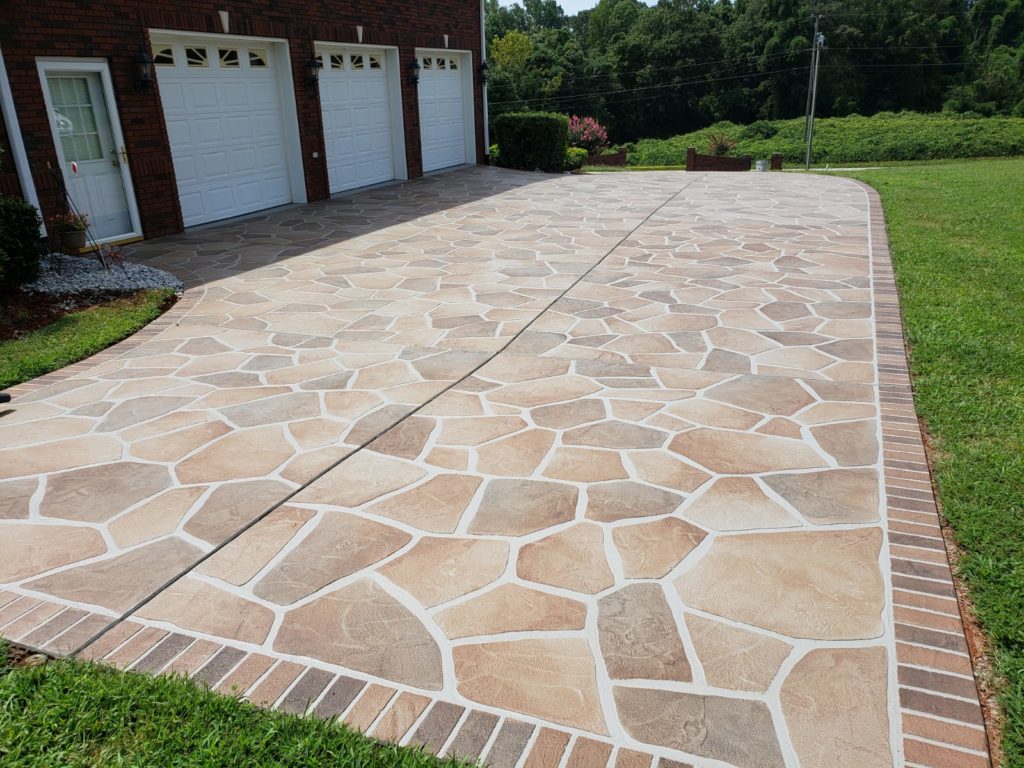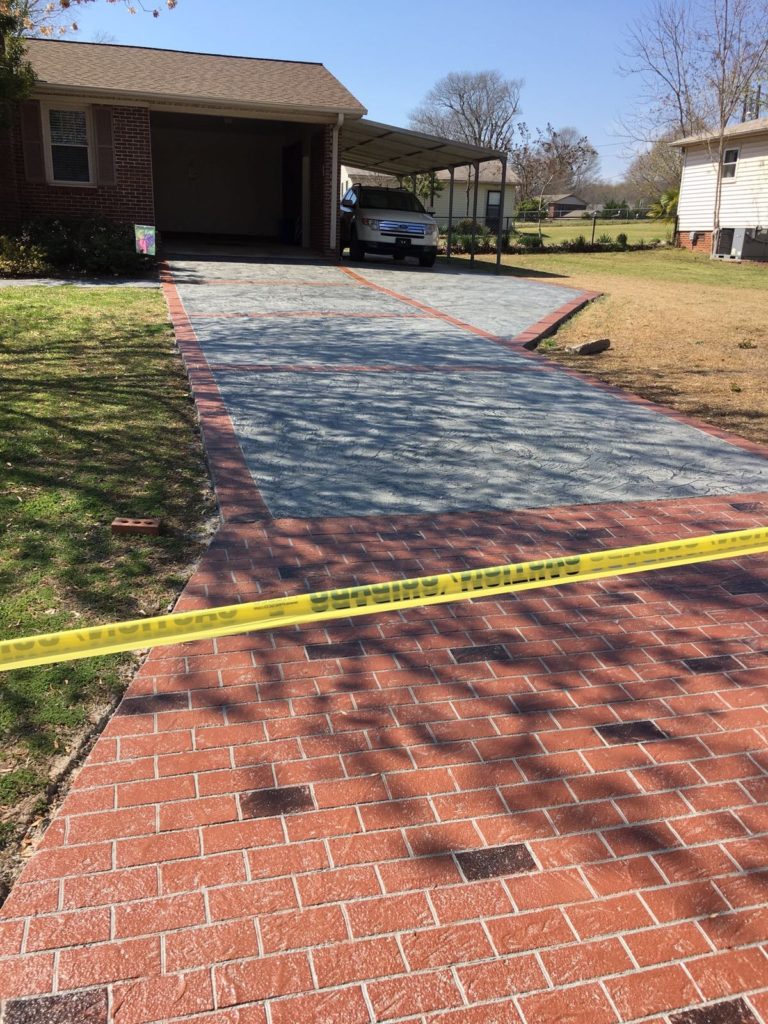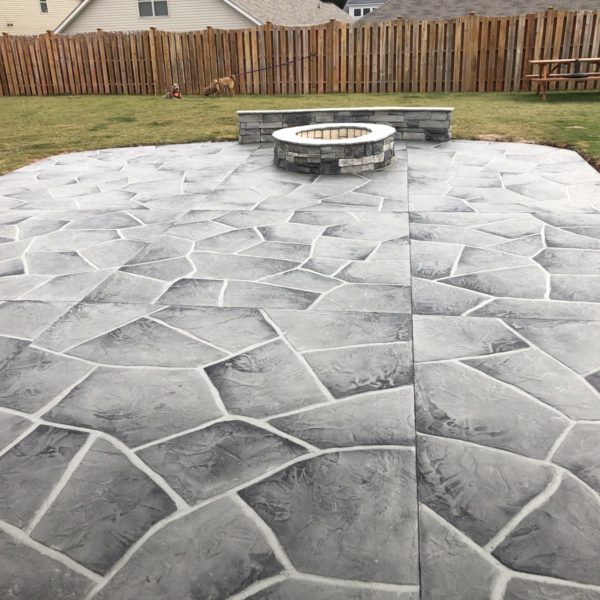When it comes to enhancing the appearance and functionality of your concrete surfaces, two popular options often come to mind: concrete overlay and concrete stamping.
Both methods offer unique advantages, but choosing the right one for your project can be a bit daunting. In this guide, we’ll explore the differences between concrete overlay and concrete stamping to help you make an informed decision.
Concrete Overlay: A Versatile Makeover

What is Concrete Overlay?
Concrete overlay, also known as concrete resurfacing or decorative concrete overlay, is a versatile solution for revitalizing existing concrete surfaces. It involves applying a thin layer of specialized concrete mix over your existing concrete substrate, transforming it into a fresh canvas for decorative finishes.
Advantages of Concrete Overlay:
- Cost-Effective: Concrete overlay is often more budget-friendly than completely tearing out and replacing your existing concrete. It saves you money on labor and disposal costs.
- Customization: One of the standout features of concrete overlay is its ability to mimic various materials like stone, tile, or wood. You can choose from a wide range of colors, patterns, and textures to suit your aesthetic preferences.
- Durability: When properly installed and maintained, concrete overlay is a durable solution that can withstand heavy foot traffic and exposure to the elements.
- Quick Installation: Compared to some other decorative concrete options, concrete overlay is relatively quick to install. This means less disruption to your daily life during the renovation process.
- Repair and Restoration: If your existing concrete surface has minor cracks or imperfections, a concrete overlay can help conceal them and provide a smooth, uniform appearance.
Common Applications:
Concrete overlay is commonly used in various residential and commercial settings, including:
- Patios and Pool Decks
- Driveways
- Interior Floors
- Sidewalks and Walkways
Concrete Stamping: The Art of Texture

What is Concrete Stamping?
Concrete stamping, also referred to as stamped concrete, is a decorative technique that transforms plain concrete into a textured and visually appealing surface. During the stamping process, patterns and textures are impressed onto freshly poured concrete, creating the illusion of natural materials like stone or brick.
Advantages of Concrete Stamping:
- Aesthetic Appeal: Stamped concrete can add a touch of elegance and sophistication to your space. With a wide array of patterns and colors available, you can achieve the look of expensive materials at a fraction of the cost.
- Customization: Stamping allows for endless design possibilities. You can choose patterns that complement your home’s architectural style or create a unique look that reflects your personality.
- Longevity: Stamped concrete, when properly maintained, can last for many years. The sealing process enhances its resistance to stains, UV rays, and wear and tear.
- Seamless Finish: Stamped concrete eliminates the need for grout lines and seams, creating a smooth surface that is easy to clean and maintain.
Common Applications:
Concrete stamping is often used in the following areas:
- Patios and Courtyards
- Pool Decks
- Walkways and Entryways
- Driveways
- Commercial Spaces
Choosing the Right Option for Your Project
The decision between concrete overlay and concrete stamping ultimately depends on your project’s specific needs and your personal preferences. Here are some factors to consider:
- Condition of Existing Concrete: If your existing concrete is in relatively good condition but lacks visual appeal, a concrete overlay might be the ideal choice. On the other hand, if you’re starting from scratch or your existing concrete is in poor condition, concrete stamping can provide a fresh start.
- Design Preferences: Concrete overlay offers a broader range of customization options, making it suitable for those who want to replicate the look of various materials. If you have a specific design in mind, stamping may be a better choice.
- Budget: Concrete overlay is generally more budget-friendly than concrete stamping, making it a practical choice for cost-conscious homeowners.
- Maintenance: Consider your willingness and ability to maintain the surface. Stamped concrete typically requires periodic resealing to preserve its appearance and durability.
- Timeframe: If you need a quick renovation with minimal disruption, concrete overlay is a faster option than concrete stamping, which involves pouring and stamping fresh concrete.
Which will you chose: Concrete overlay or concrete stamping?
Both concrete overlay and concrete stamping offer excellent ways to enhance the beauty and functionality of your concrete surfaces. Your choice should align with your project’s requirements, budget, and aesthetic preferences. Whether you opt for the versatility of concrete overlay or the textured elegance of stamped concrete, you’re sure to enjoy a stunning transformation that enhances your property’s value and curb appeal.

